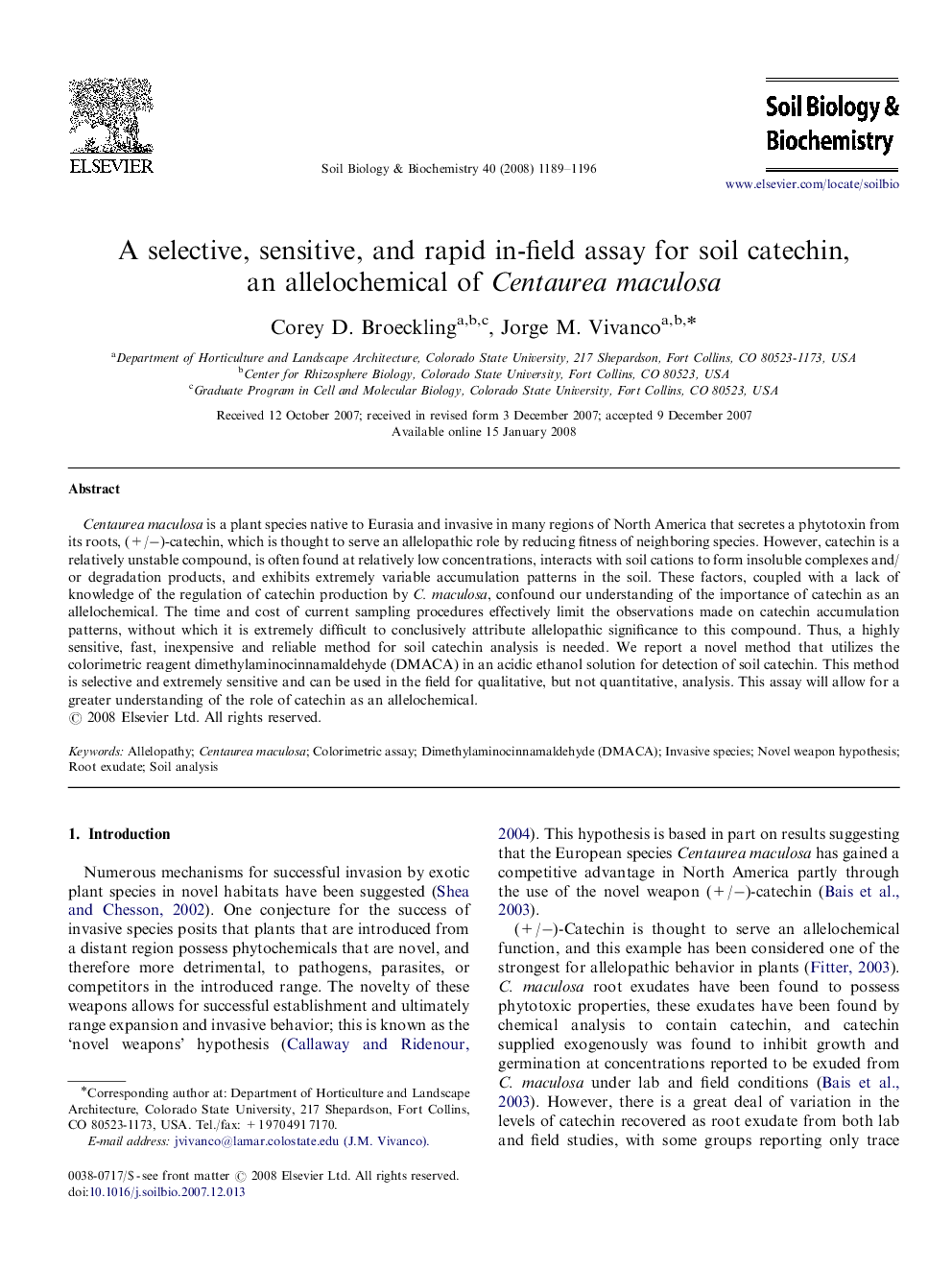| Article ID | Journal | Published Year | Pages | File Type |
|---|---|---|---|---|
| 2026034 | Soil Biology and Biochemistry | 2008 | 8 Pages |
Centaurea maculosa is a plant species native to Eurasia and invasive in many regions of North America that secretes a phytotoxin from its roots, (+/−)-catechin, which is thought to serve an allelopathic role by reducing fitness of neighboring species. However, catechin is a relatively unstable compound, is often found at relatively low concentrations, interacts with soil cations to form insoluble complexes and/or degradation products, and exhibits extremely variable accumulation patterns in the soil. These factors, coupled with a lack of knowledge of the regulation of catechin production by C. maculosa, confound our understanding of the importance of catechin as an allelochemical. The time and cost of current sampling procedures effectively limit the observations made on catechin accumulation patterns, without which it is extremely difficult to conclusively attribute allelopathic significance to this compound. Thus, a highly sensitive, fast, inexpensive and reliable method for soil catechin analysis is needed. We report a novel method that utilizes the colorimetric reagent dimethylaminocinnamaldehyde (DMACA) in an acidic ethanol solution for detection of soil catechin. This method is selective and extremely sensitive and can be used in the field for qualitative, but not quantitative, analysis. This assay will allow for a greater understanding of the role of catechin as an allelochemical.
